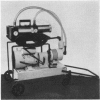Abstract
The prevalence of byssinosis was measured in a population of 189 male and 780 female workers employed in three coarse and two fine cotton mills. Ninety-eight per cent. of the male and 96% of the female population were seen.
The workers were graded by their histories as follows:
Grade 0—No symptoms of chest tightness or breathlessness on Mondays
Grade ½—Occasional chest tightness on Mondays, or mild symptoms such as irritation of the respiratory tract on Mondays
Grade 1—Chest tightness and/or breathlessness on Mondays only
Grade 2—Chest tightness and/or breathlessness on Mondays and other days
The dust concentrations to which the workers were exposed were measured with a dust-sampling instrument based on the hexhlet. Altogether 505 working places were sampled. In the card-rooms of the coarse mills 63% of the men and 48% of the women had symptoms of byssinosis. In the card-rooms of the fine mills the corresponding prevalences were 7% for the men, and 6% for the women. Prevalences were low in the spinning-rooms in the coarse mills. The mean dust concentrations in the different rooms ranged from 90 mg./100 m.3 in one section of the card-room in a fine mill, to 440 mg./100 m.3 in one of the card-rooms of the coarse spinning mills. The prevalence of byssinosis in the different rooms was closely related to the overall dustiness (r = 0·93). For the three main constituents of the dust, namely, cellulose, protein, and ash, the prevalence of byssinosis correlated most highly with protein, particularly with the protein in the medium-sized dust particles, i.e., approximately 7 microns to 2 mm.
The symptoms of byssinosis may be caused by something in the plant débris which affects the respiratory tract above the level of the terminal bronchioles. This is the site where the medium-sized dust deposits. The possible importance of the fine dust is discussed.
For routine measurements in industry, it is necessary to have a method of assessing dustiness in which the sampling equipment is simple and assessment rapid. As total dust concentration is relatively easy to measure, and correlates closely with the prevalence of byssinosis, permissible levels of dustiness have been expressed in terms of total dust. On comparing the prevalence of byssinosis among workers with short and long exposures and low and high concentrations (Table 11), it appears that a mill with a concentration of 100 mg./100 m.3 or less would be reasonably safe, but in dusty card-rooms it seems that such levels are not possible to achieve at present. As it is necessary to adopt a realistic target that can be achieved, it is suggested that dust concentrations in cotton mills should be less than 250 mg./100 m.3 and that periodic medical examinations should be adopted to protect susceptible workers who can be advised to leave their dusty environment before they are permanently disabled.
Full text
PDF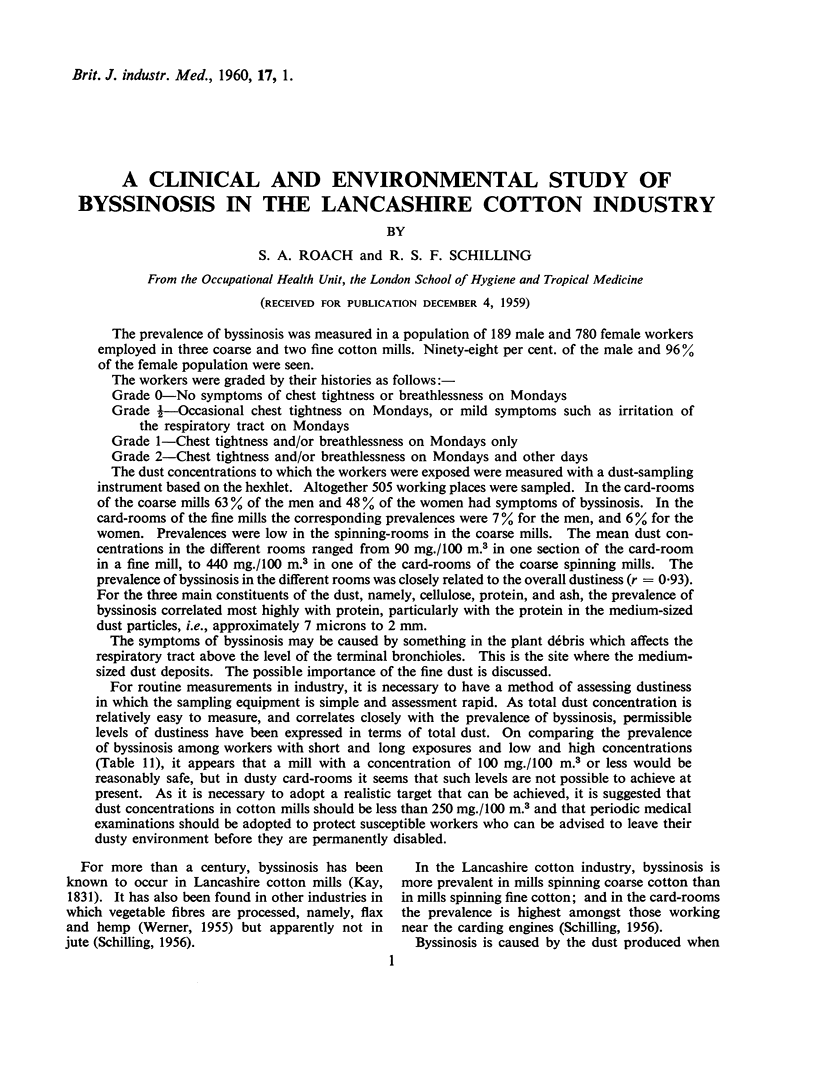
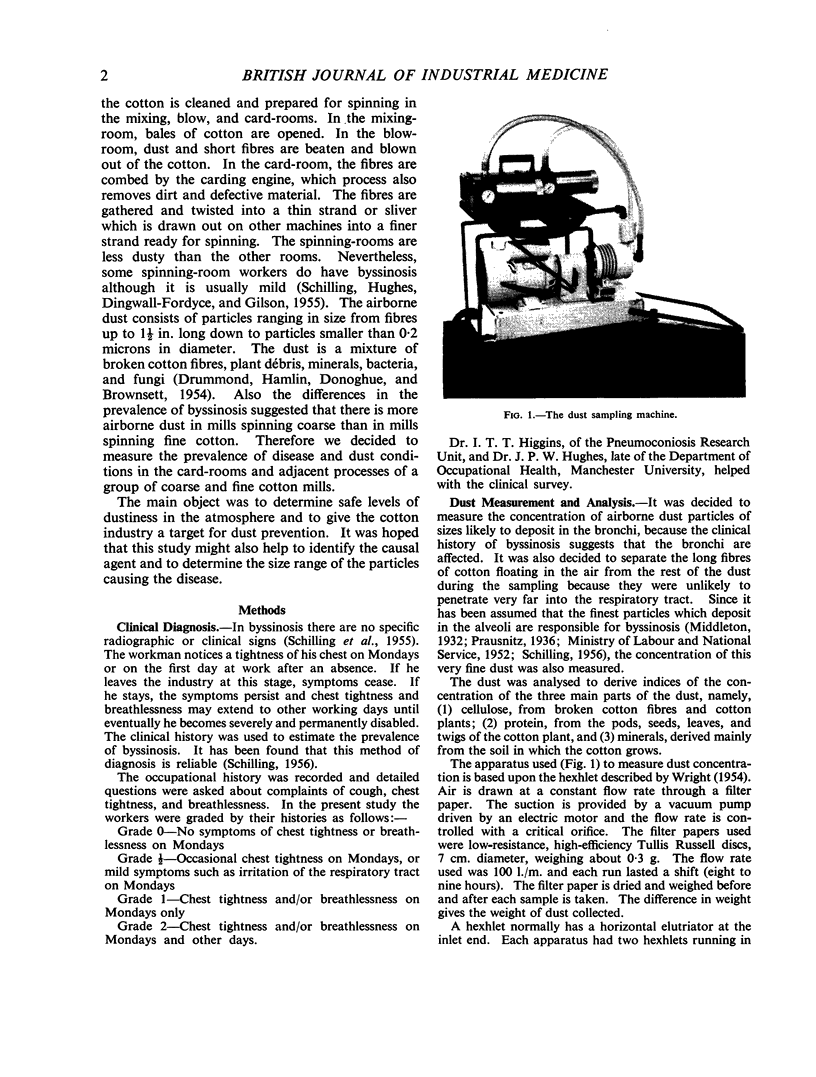
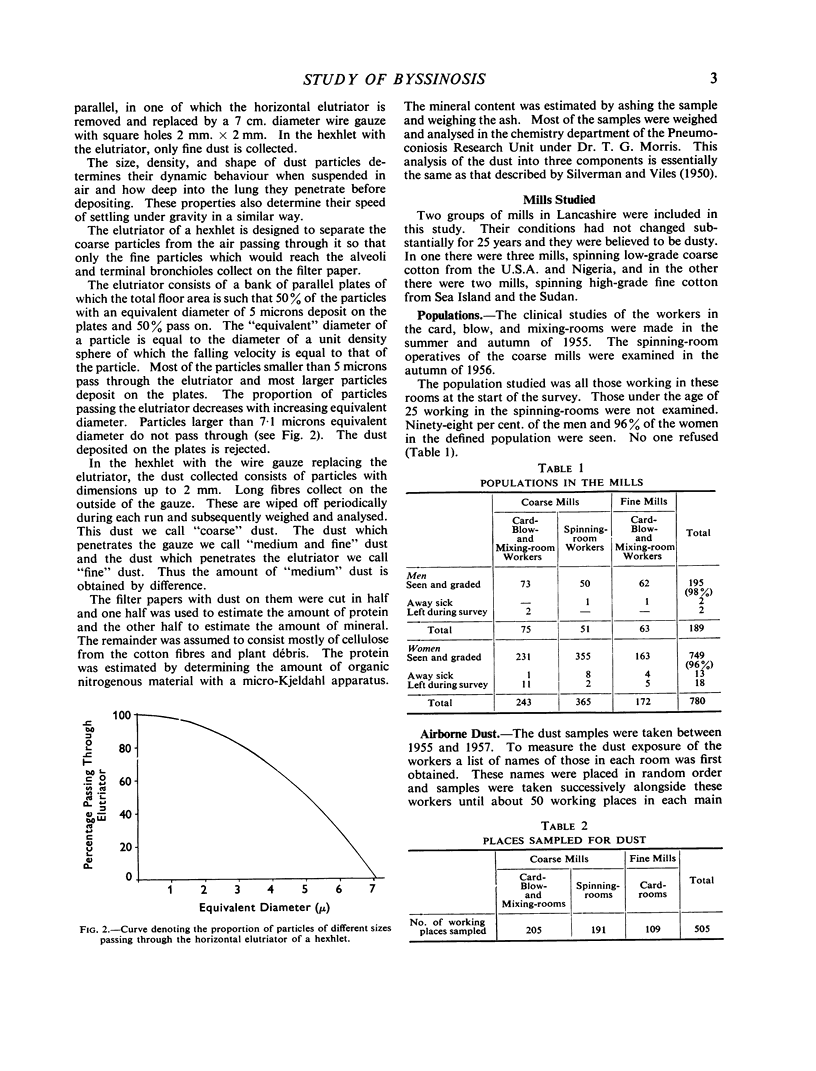
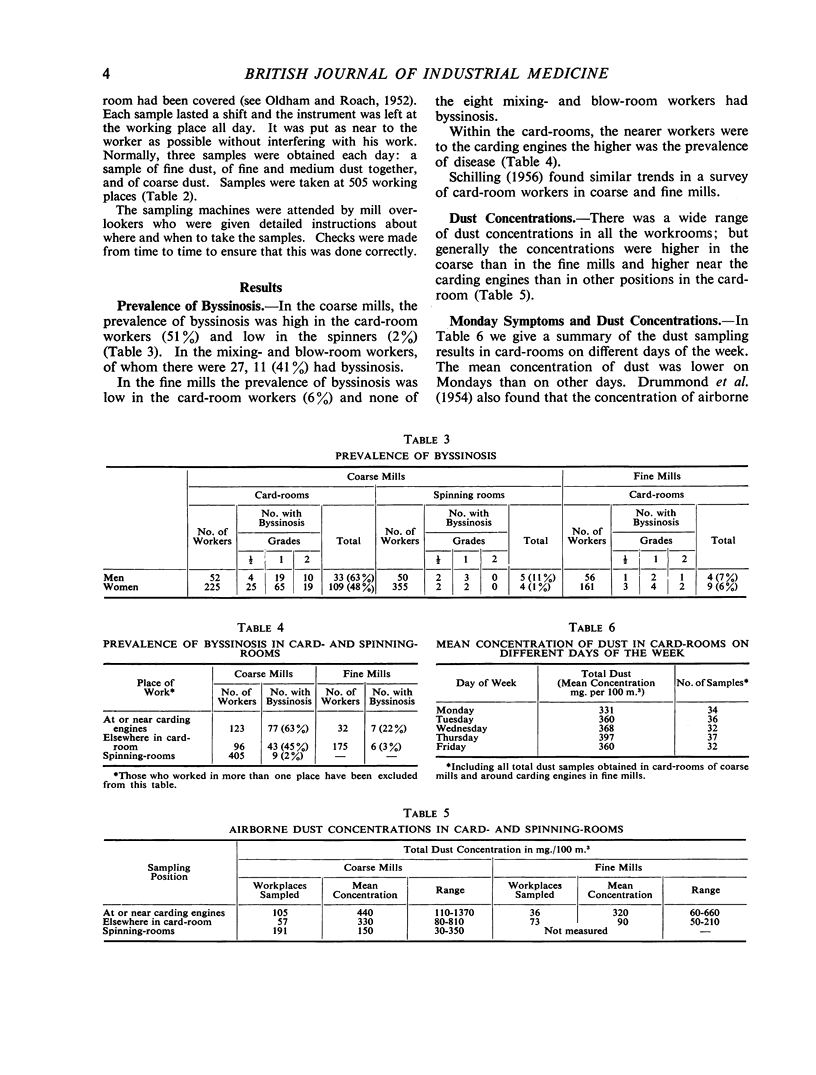
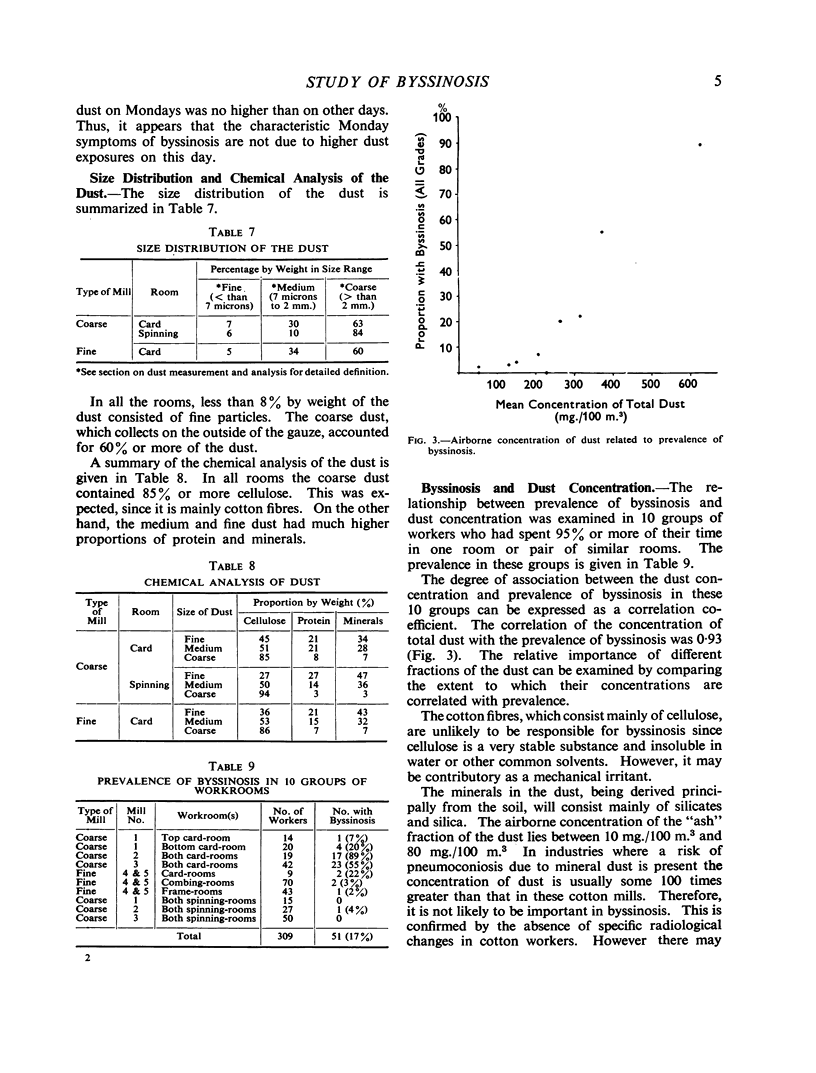
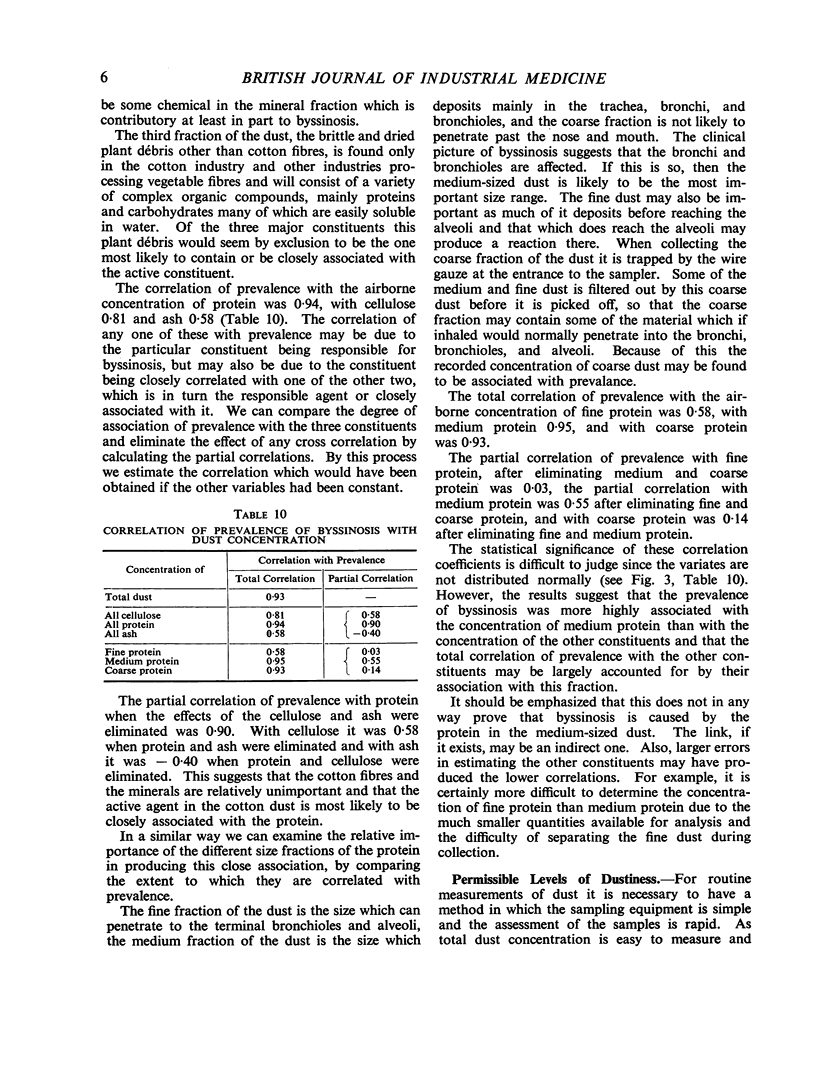
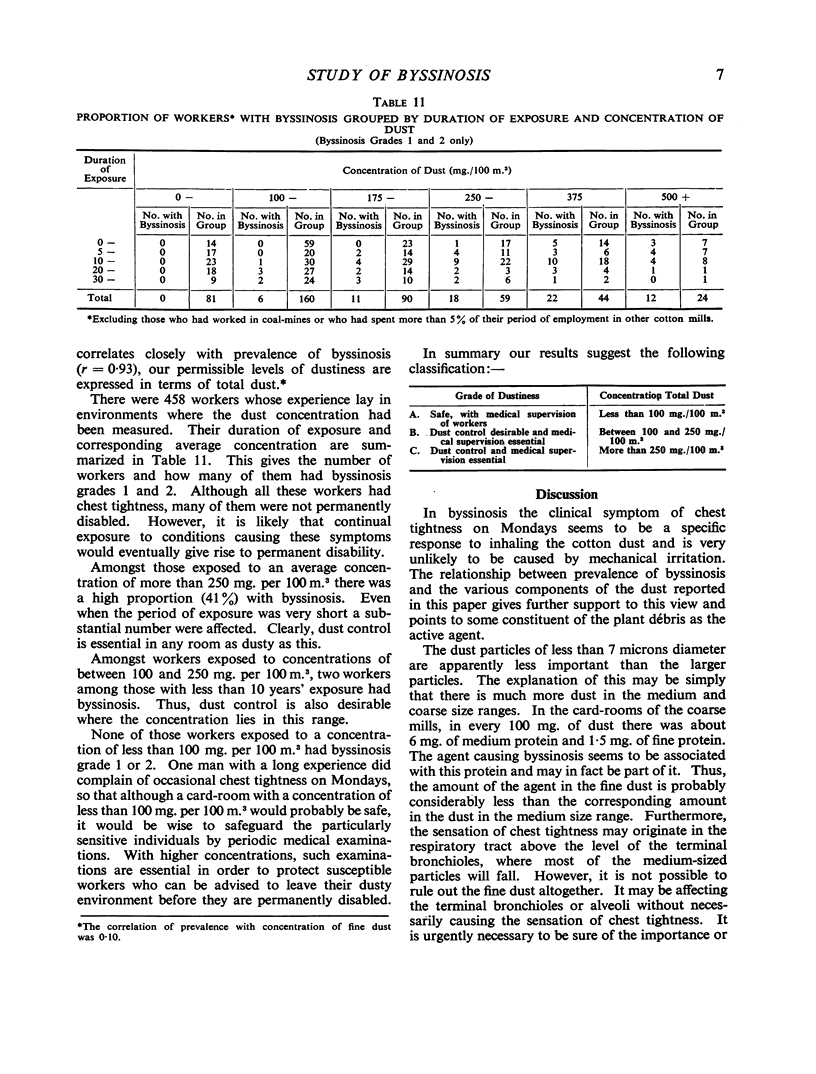
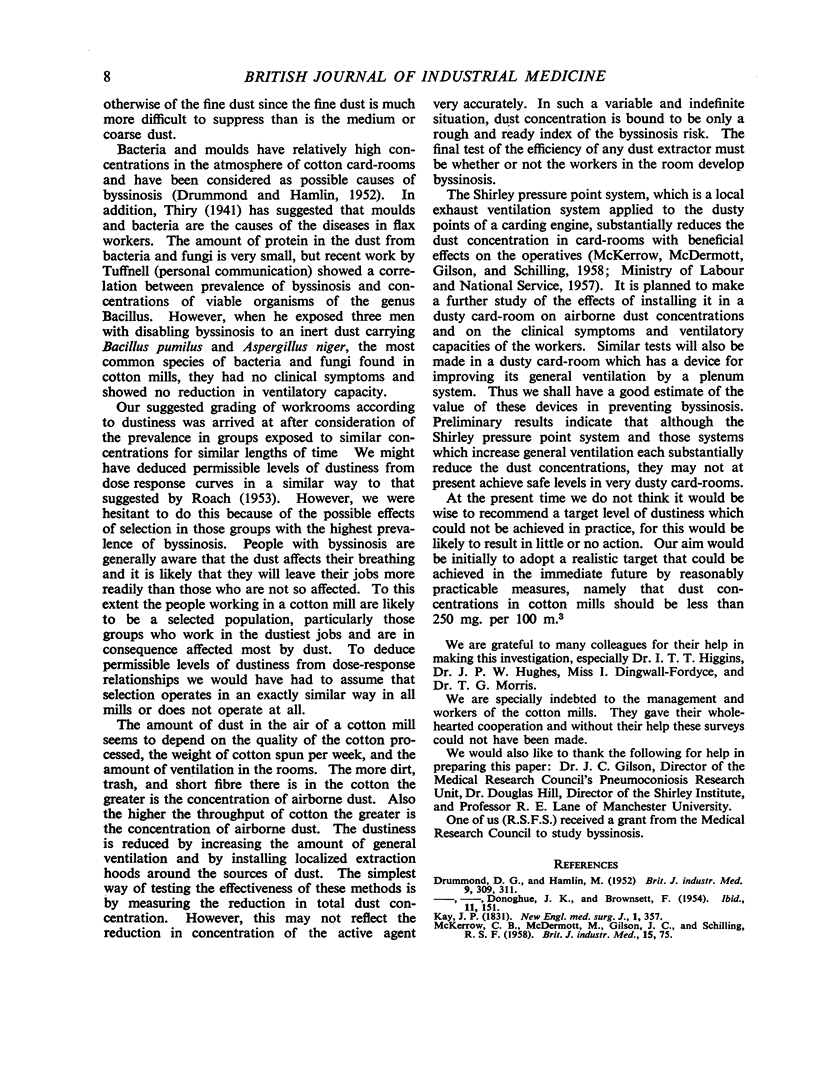
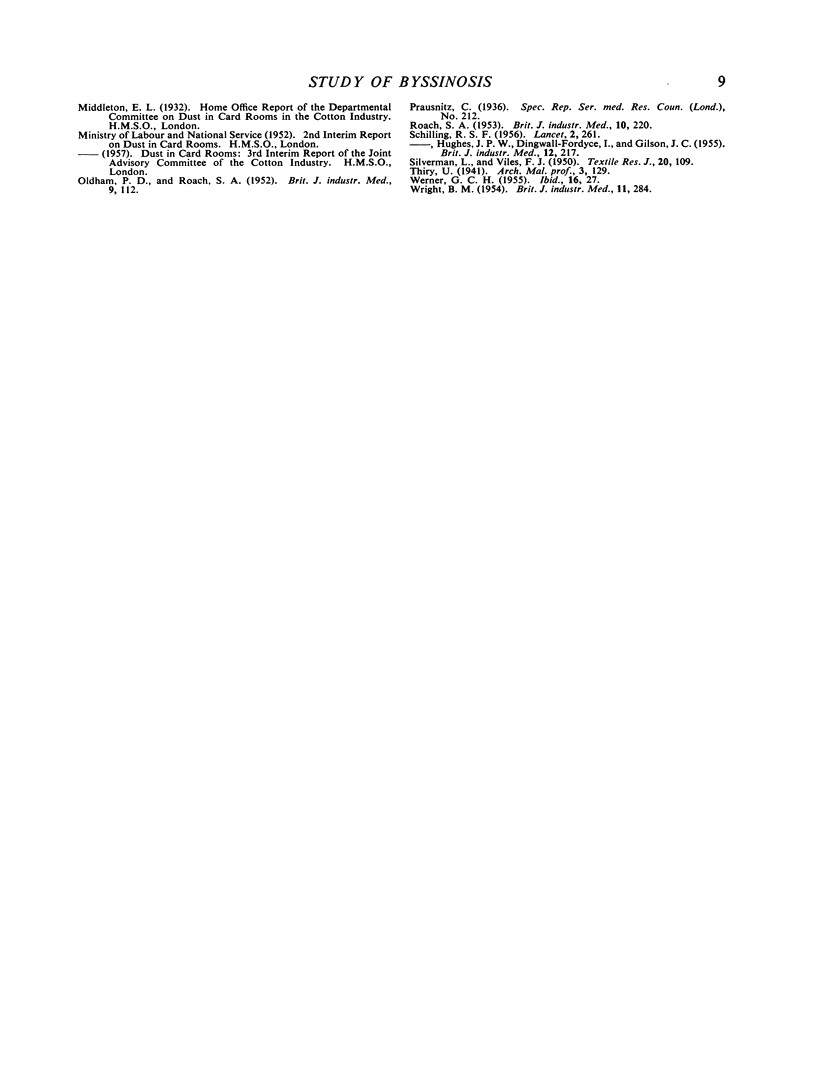
Images in this article
Selected References
These references are in PubMed. This may not be the complete list of references from this article.
- DRUMMOND D. G., HAMLIN M. Airborne bacteria in cotton mills. I. Survey of counts of viable bacteria. Br J Ind Med. 1952 Oct;9(4):309–311. doi: 10.1136/oem.9.4.309. [DOI] [PMC free article] [PubMed] [Google Scholar]
- DRUMMOND D. G., HAMLIN M., DONOGHUE J. K., BROWNSETT F. The effect of oiling the cotton on the airborne contamination in card rooms. Br J Ind Med. 1954 Apr;11(2):151–155. doi: 10.1136/oem.11.2.151. [DOI] [PMC free article] [PubMed] [Google Scholar]
- McKERROW C. B., McDERMOTT M., GILSON J. C., SCHILLING R. S. Respiratory function during the day in cotton workers: a study in byssinosis. Br J Ind Med. 1958 Apr;15(2):75–83. doi: 10.1136/oem.15.2.75. [DOI] [PMC free article] [PubMed] [Google Scholar]
- OLDHAM P. D., ROACH S. A. A sampling procedure for measuring industrial dust exposure. Br J Ind Med. 1952 Apr;9(2):112–119. doi: 10.1136/oem.9.2.112. [DOI] [PMC free article] [PubMed] [Google Scholar]
- ROACH S. A. A method of relating the incidence of pneumoconiosis to airborne dust exposure. Br J Ind Med. 1953 Oct;10(4):220–226. doi: 10.1136/oem.10.4.220. [DOI] [PMC free article] [PubMed] [Google Scholar]
- SCHILLING R. S., HUGHES J. P., DINGWALL-FORDYCE I., GILSON J. C. An epidemiological study of byssinosis among Lancashire cotton workers. Br J Ind Med. 1955 Jul;12(3):217–227. doi: 10.1136/oem.12.3.217. [DOI] [PMC free article] [PubMed] [Google Scholar]



